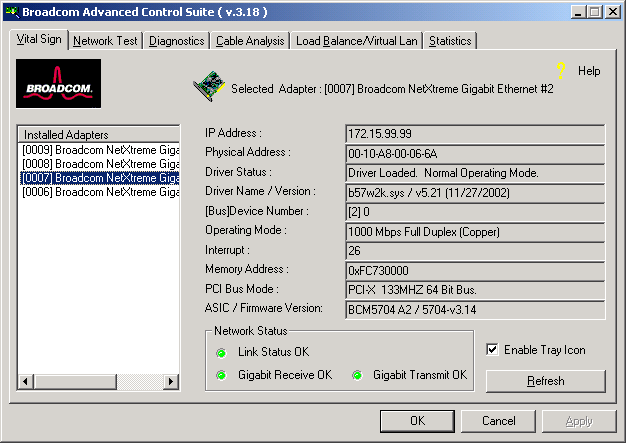Broadcom Mac Address
- Windows drivers for Broadcom Bluetooth devices are no longer posted here. They should be available through Microsoft's Windows Update service. If drivers were not downloaded automatically by Windows Update, use Device Manager to refresh the driver from Windows Update,.
- The resulting virtual disk image or folder contains the application installer and a folder called Additional Resources. Both items must be present in the same location for a successful installation.
BROADCOM 802.11 A DRIVERS FOR MAC - Network and modem Manufacturer: I would click the wi-fi icon in the system tray then click disconnect and then reconnect and it would work ok for a while. In reply to Yolanda Ullom's post on January 20, E-mail me with comments at gmfogle yahoo. Ever since the last Windows update, I was getting that same message upon.
WARNING: RemoveSymantecMacFiles does not target a single Symantec product. It removes all files and folders for ALL Symantec and Norton products for Mac, including any contents you have created yourself within those folders.
Broadcom For Mac Installer
To download and run RemoveSymantecMacFiles:

- Download RemoveSymantecMacFiles.zip from article attachments.
- Symantec updates this tool regularly to accommodate changes introduced in newer releases of Symantec Endpoint Protection for Macintosh, so if you have not downloaded it recently, we recommend that you do so now.
- On the target computer, double-click the RemoveSymantecMacFiles.zip file that you downloaded so that the file expands.
- We recommend using the built-in Archive Utility to expand this file.
- NOTE: To use this tool, you must be logged in to the Macintosh with an Administrator account with a non-blank password.
- Open the RemoveSymantecMacFiles folder.
- Double-click RemoveSymantecMacFiles.command (if you do not display file extensions, it appears as RemoveSymantecMacFiles). This will launch a Terminal window.
- If an OS security prompt appears ('... can't be opened because it is from an unidentified developer') then use control-click to open and bypass security prompt (see Open a Mac app from an unindentified developer for more information).
- Type your macOS password, and then press return.
- NOTE: When you type your password, no characters appear.
- Do one of the following:
- To remove all Symantec files and folders, type 1
- To quit RemoveSymantecMacFiles without removing any files, type 2
- Press Return.
- The utility RemoveSymantecMacFiles removes all files within Symantec-installed folders, even those you may have created yourself.
- On the Terminal menu, click Quit Terminal.
SymantecRemovalTool (SymantecRemovalTool.zip) is a modification to RemoveSymantecMacFiles, designed to be pushed out using customer's choice of remote deployment tool. It requires no user input when running as root. As with RemoveSymantecMacFiles, all files and folders that Symantec Mac products have created will be removed; therefore, you will lose all files that reside in those folders, including any that you have created manually. For more information, please see the readme file included with the SymantecRemovalTool download. Symantec provides support for SymantecRemovalTool/RemoveSymantecMacFiles only when running them locally; it is the customer's responsibility to integrate SymantecRemovalTool with Apple Remote Desktop or other remote deployment tools.

Both of these tools require no arguments. Any arguments they receive are each assumed to be potential installation points for Symantec products. Remote deployment solutions (Casper, JAMF, et al) that automatically populate shell script arguments ($1, $2, etc) with other data may cause the Symantec tool to throw an error. To work around this, the remote deployment solution may be configured to call first a dummy script that in turn calls the removal tool without any extra arguments.


